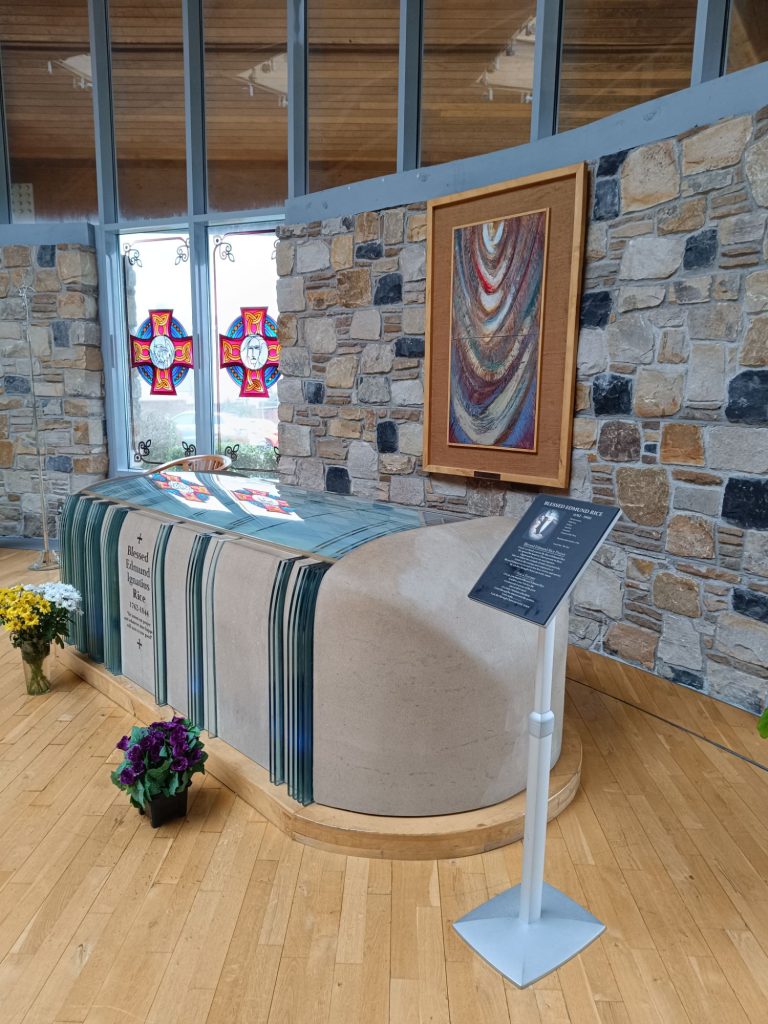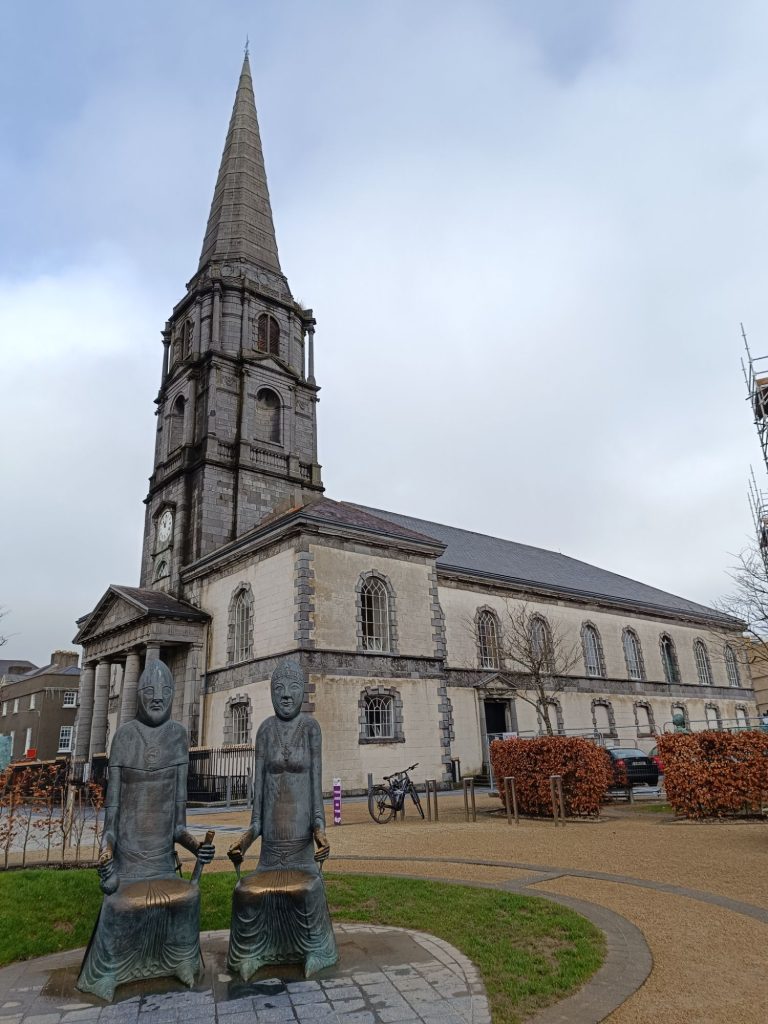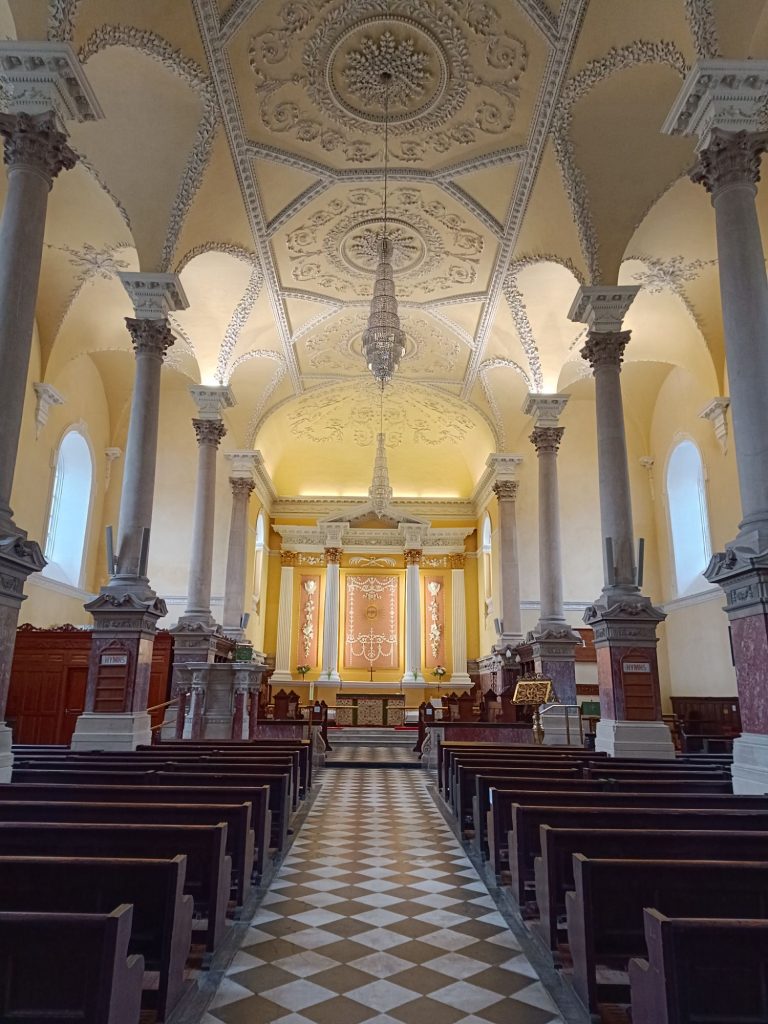Waterford 2025
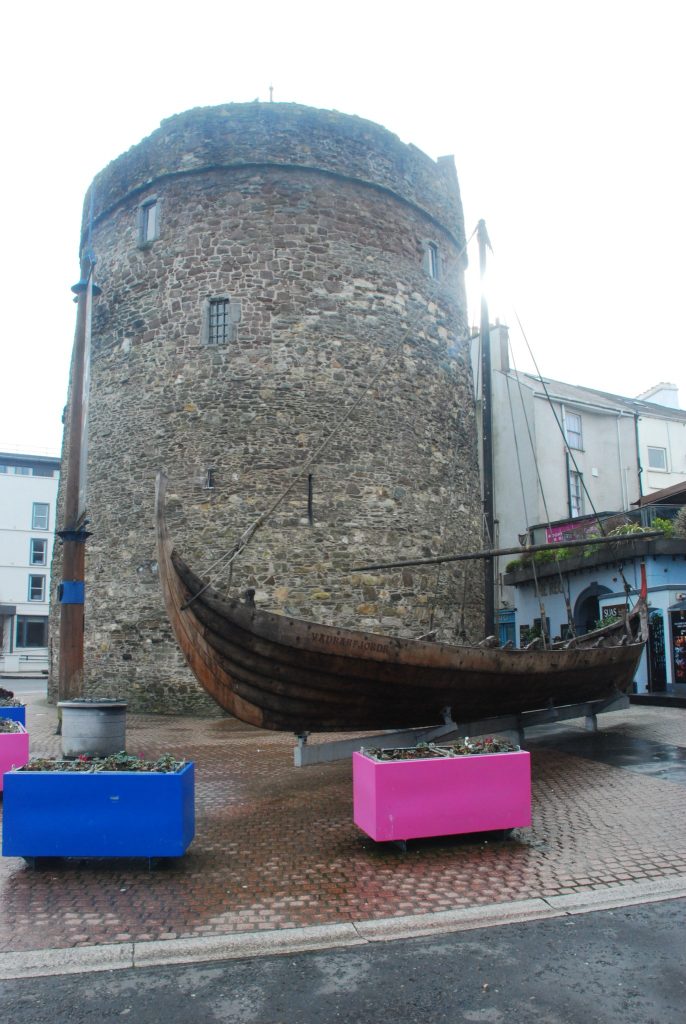
The name Waterford comes from an old norse word Vedrarfjordr. It either means “Fjord of the Rams” or “Windy Fjord”. It was first settled by the Vikings and was the site where the Normans first set foot in Ireland. Strongbow and Aiofe is said to have been married on the site of the Waterford Christ Church. Reginald’s tower is run by OPW but it was closed the week we were there.
Medieval Museum
Few things to see in the museum. There are 2 medieval vaults to see how buildings were built. They kept the charter for Waterford that was issued in 1372. It contains depiction of the succession of monarch who issued the charter. Then there’s the rediscovered gold cloth vestments. The vestments were commissioned by Dean John Collyn in 1468, and almost certainly paid for by James Rice, one of Waterford’s leading citizens who served as mayor several times. The intricate needlework is supposedly made in Bruges. The vestments were hidden underground to protect them from Cromwellian forces during the siege of Waterford in 1650, and remained there for 123 years. Bishop Chenevix presented them to Waterford’s Roman Catholic bishop some time between 1797 and 1803.
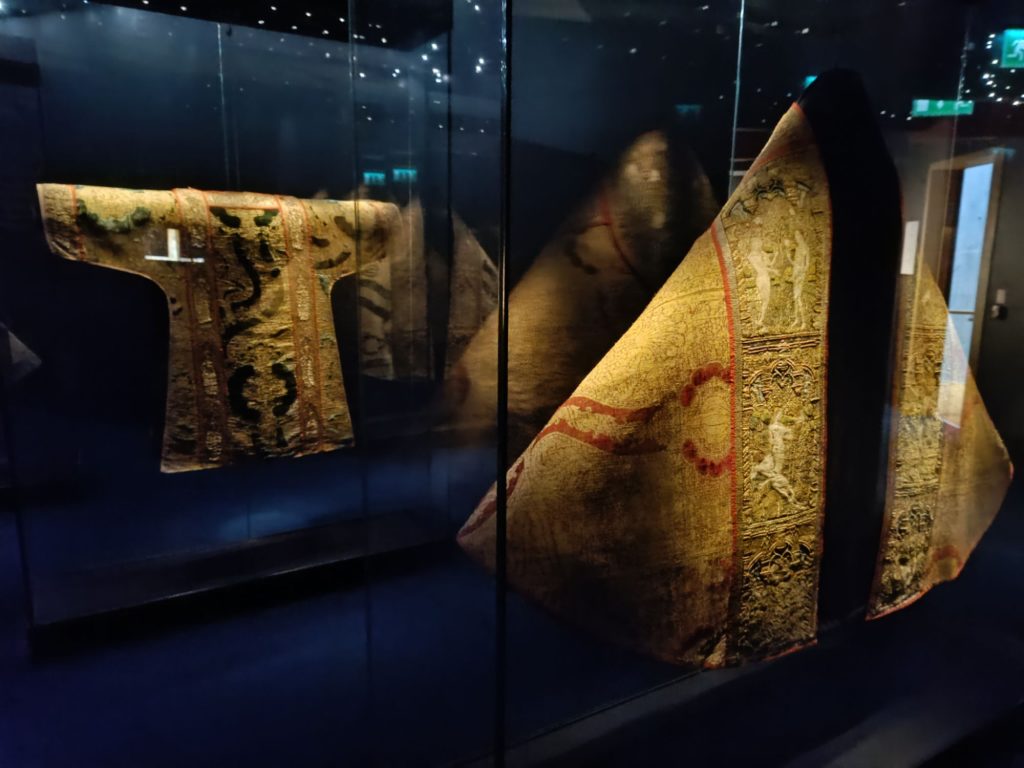
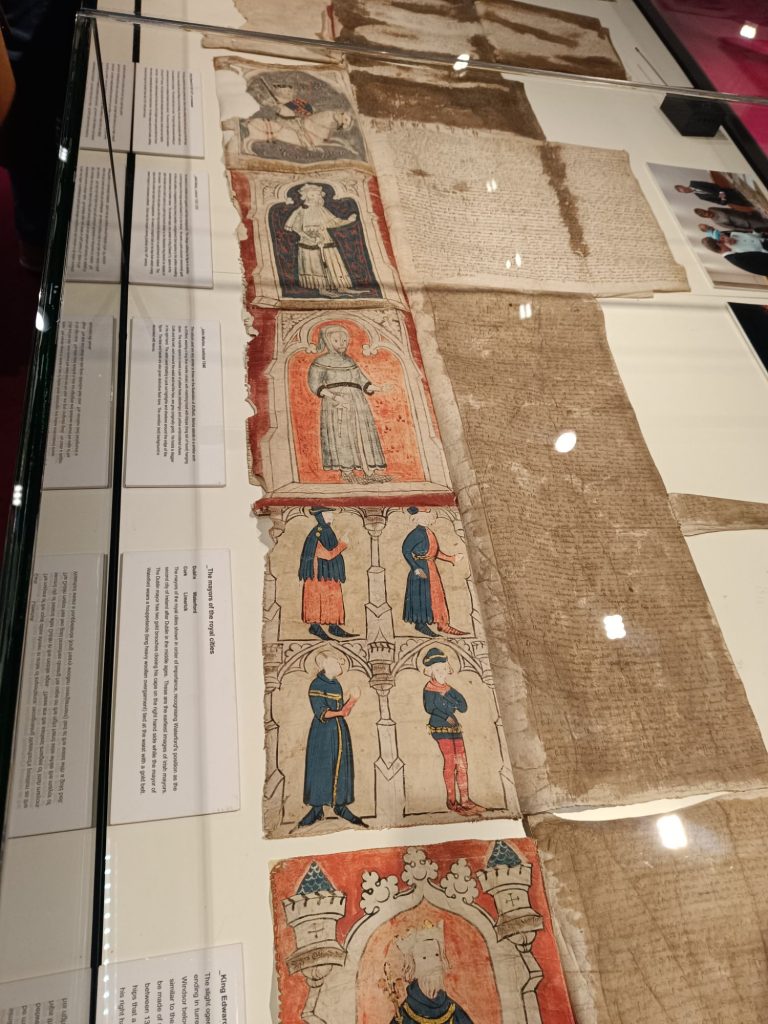
A piece of the viking wall inside Waterford Penny’s. Great to see buildings preserving history. And guess what, we went in to see the wall and end up buying something. It’s a good marketing tool.
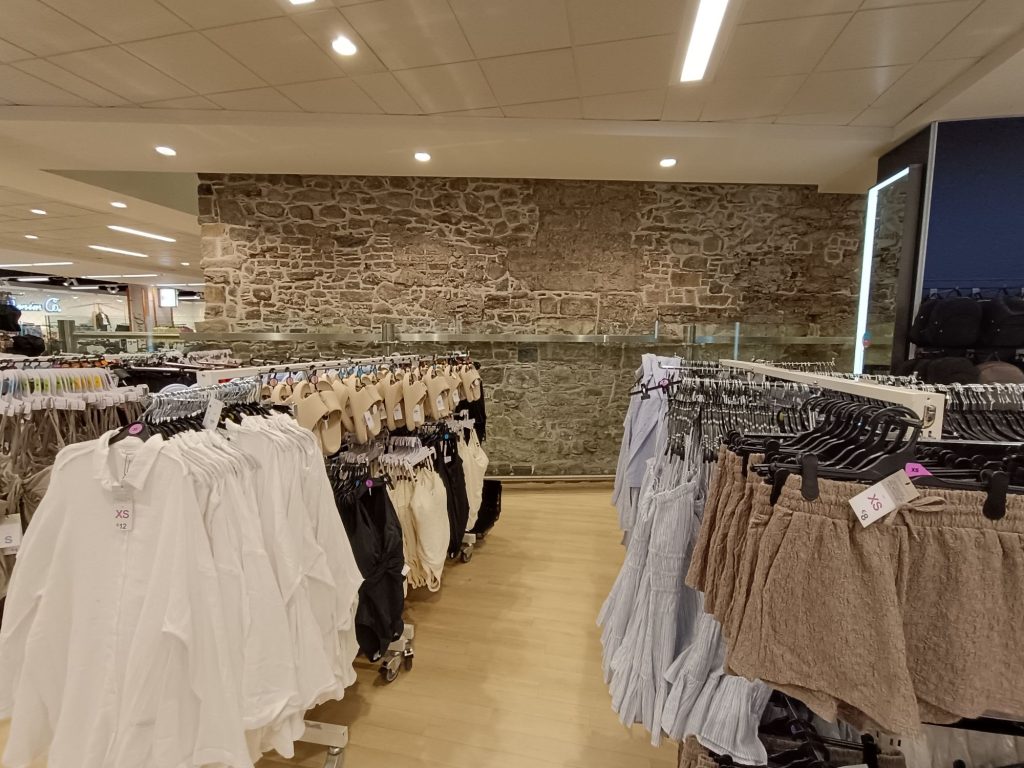
Hook Lighthouse
Standing on the rugged cliffs of the Waterford coastline, Hook Lighthouse welcomes visitors with its towering black-and-white stripes, marking nearly 800 years of uninterrupted service to sailors. As one of the oldest functioning lighthouses in the world, stepping inside feels like walking through history itself. The guided tour offers captivating tales of medieval monks, shipwrecks, and the keepers who once ensured the light never faded. Climbing the spiral staircase leads to stunning panoramic views of the Atlantic, where waves crash against the rocky shore, reinforcing the lighthouse’s enduring presence. Outside, the salty breeze and the sight of seabirds soaring above complete the experience, making Hook Lighthouse a must-visit destination for history lovers and nature enthusiasts alike.
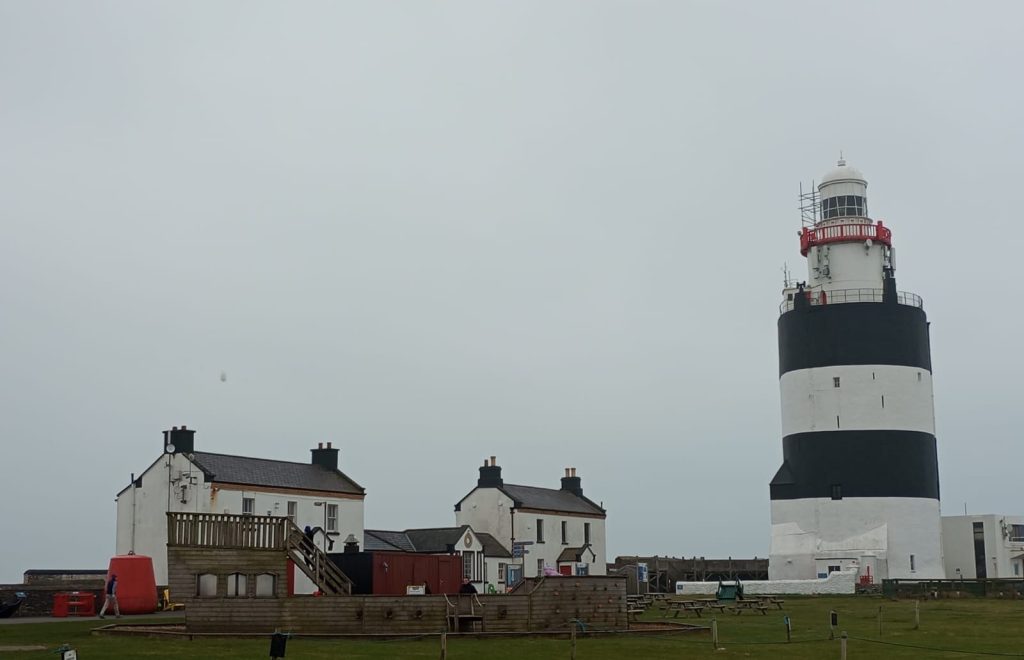
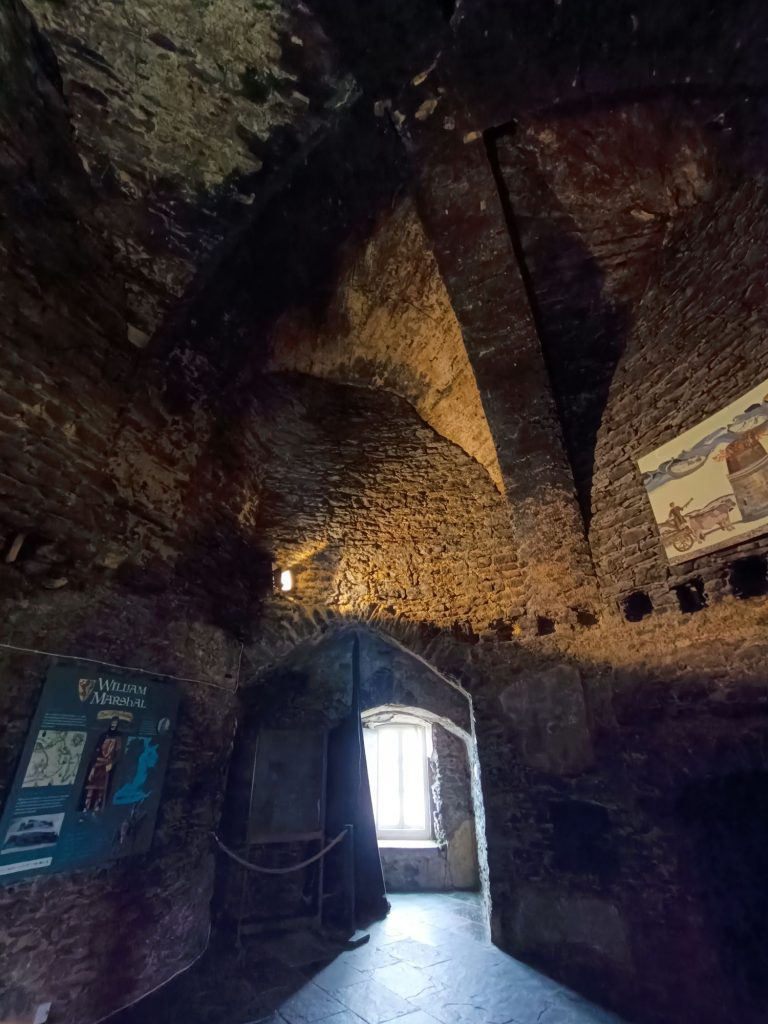
Christ Church Cathedral
Waterford Christ Church Cathedral stands as a striking architectural masterpiece, rich in history and elegant design. A visit to this iconic site offers a glimpse into centuries of heritage, from its Georgian-style façade to its grand interiors adorned with soaring columns and intricate stained-glass windows. The cathedral sits on the grounds of a former Viking church, where Strongbow and Aoife were said to have been married, a legacy commemorated by beautifully sculpted figures outside. Inside, visitors can admire the craftsmanship of the historic organ and the peaceful ambiance of the nave, which provides a perfect space for quiet reflection. Whether exploring its artistic details or uncovering its deep-rooted past, Waterford Christ Church Cathedral is a must-see for anyone drawn to Ireland’s rich history.
Edmund Rice Center
Edmund Rice is the founder of Christian Brothers. They have schools all over Ireland. Gabriel is in an Edmund Rice school so we stopped by his chapel and tomb. Christian Brothers has been controversial in recent history. The chapel is very quiet, there’s no visitors. There was a visitor center but it has been closed for a long time. The design of the chapel can be said as modern. We went there, lit a candle and took a prayer card that Gabriel now sticks on his desk in school.
